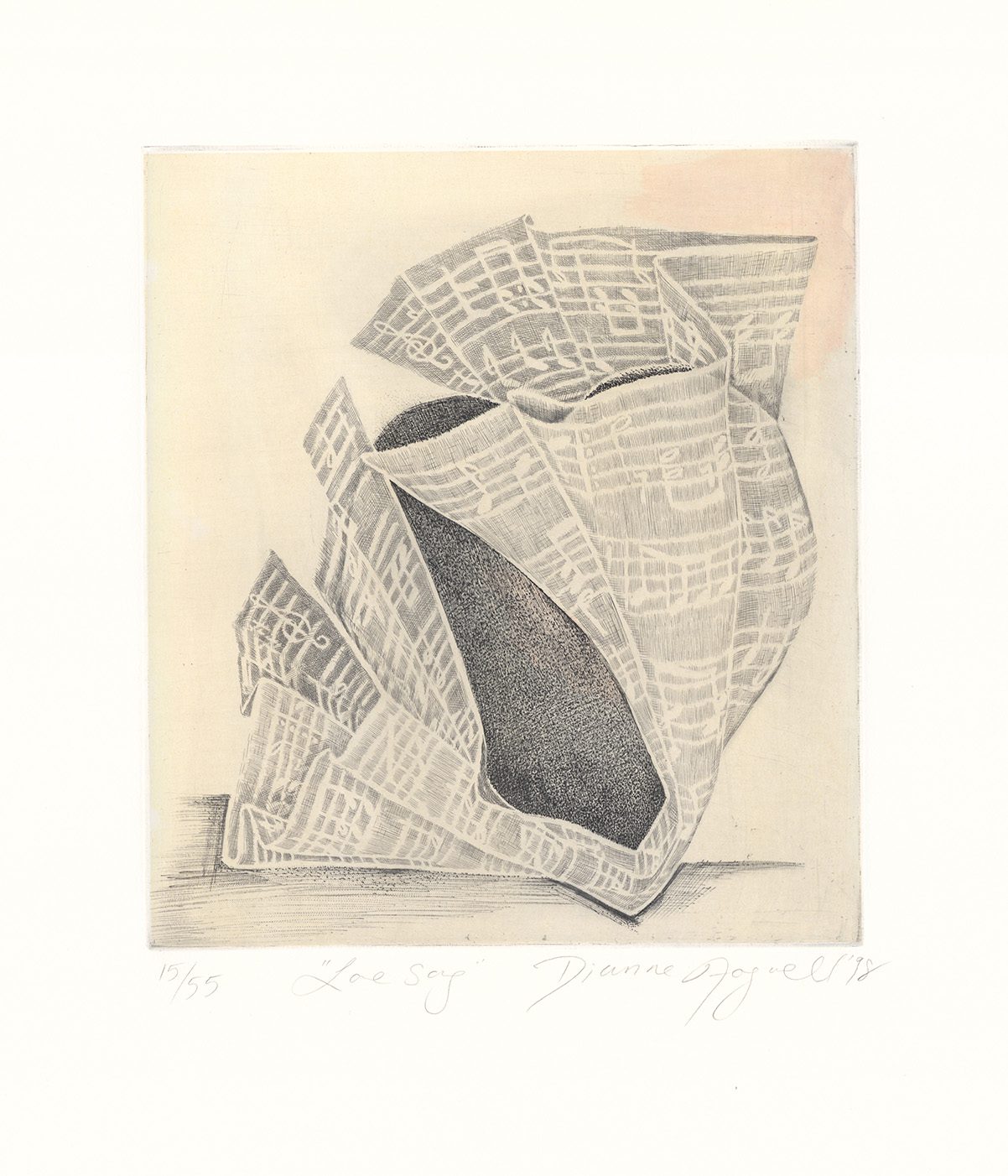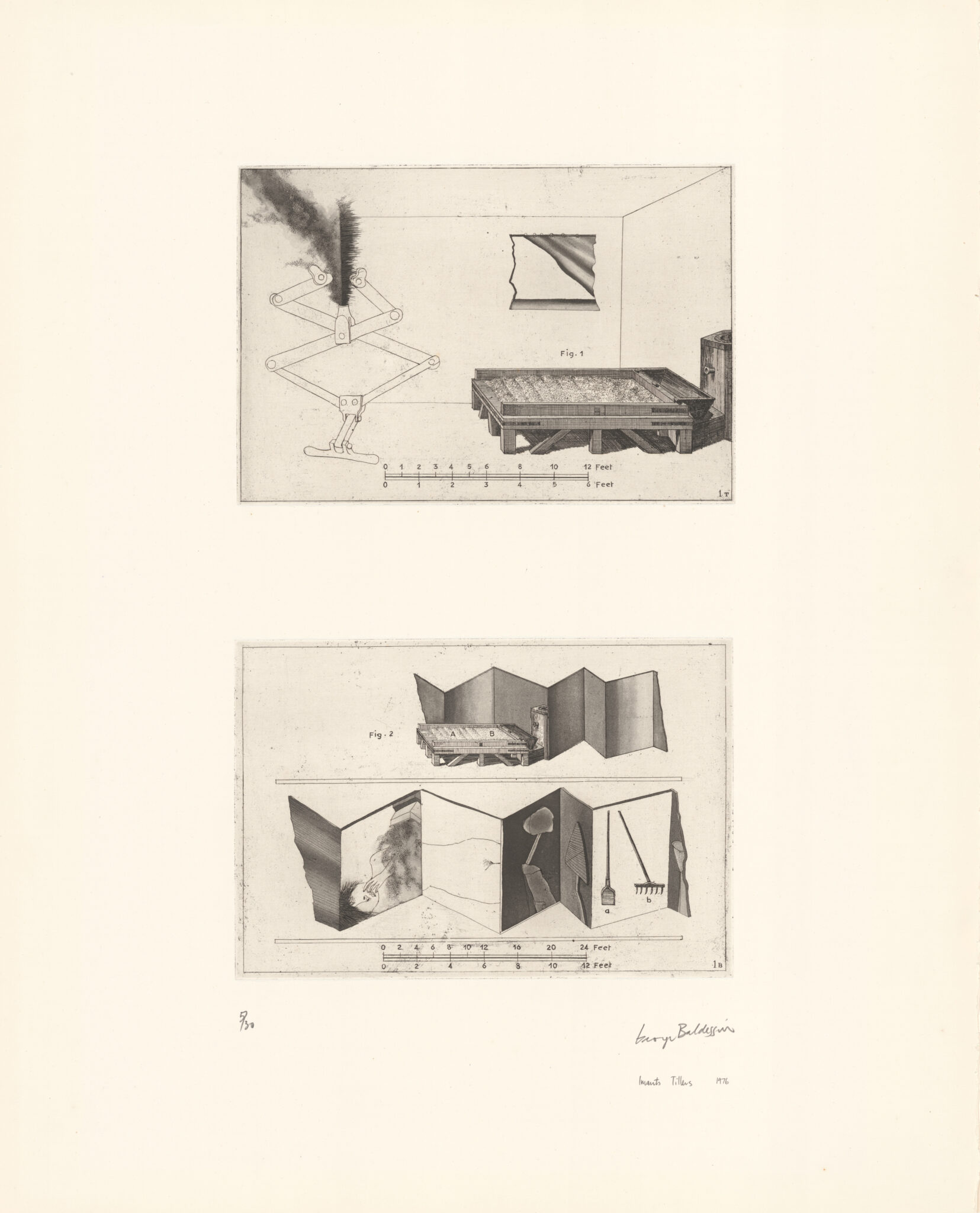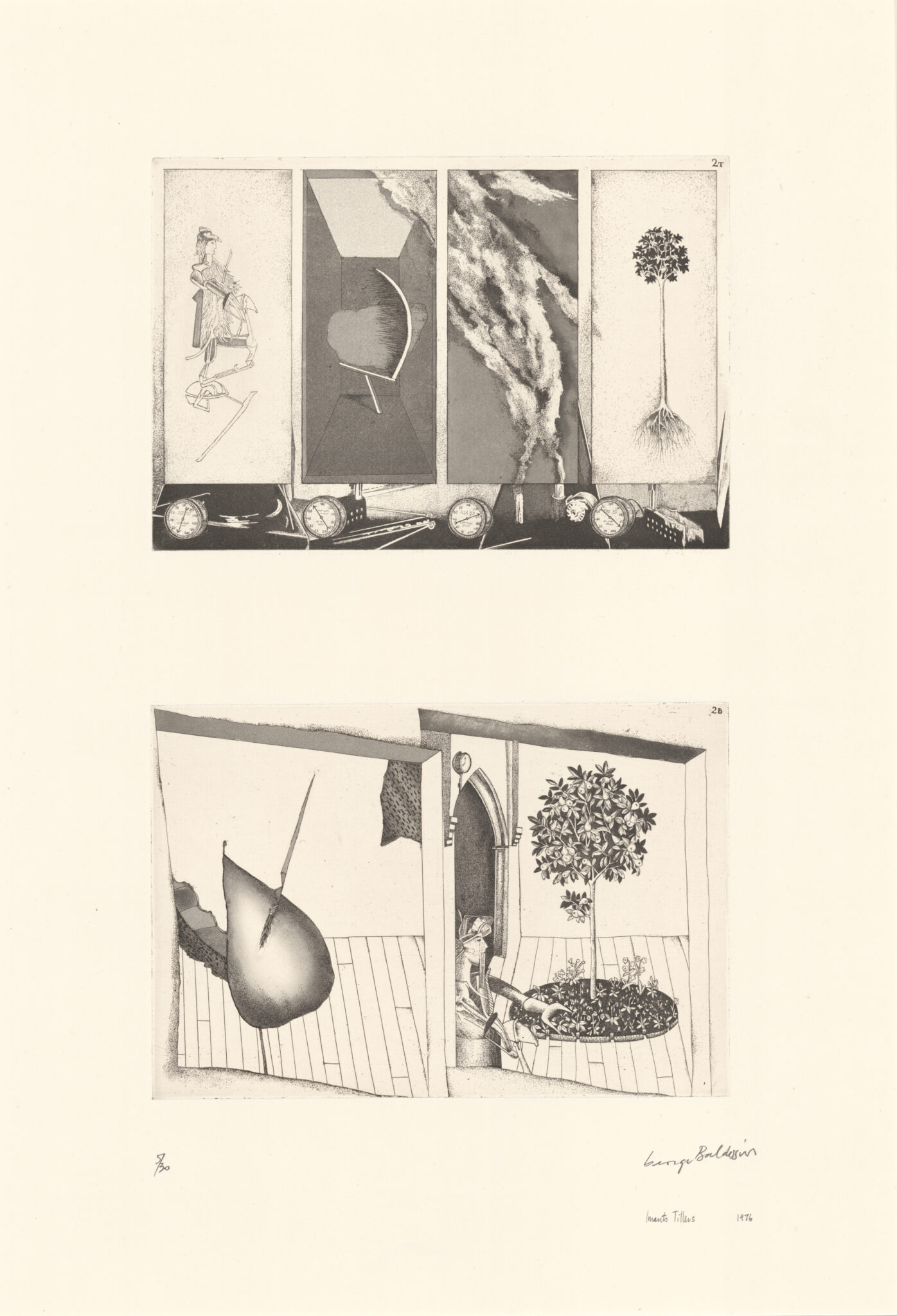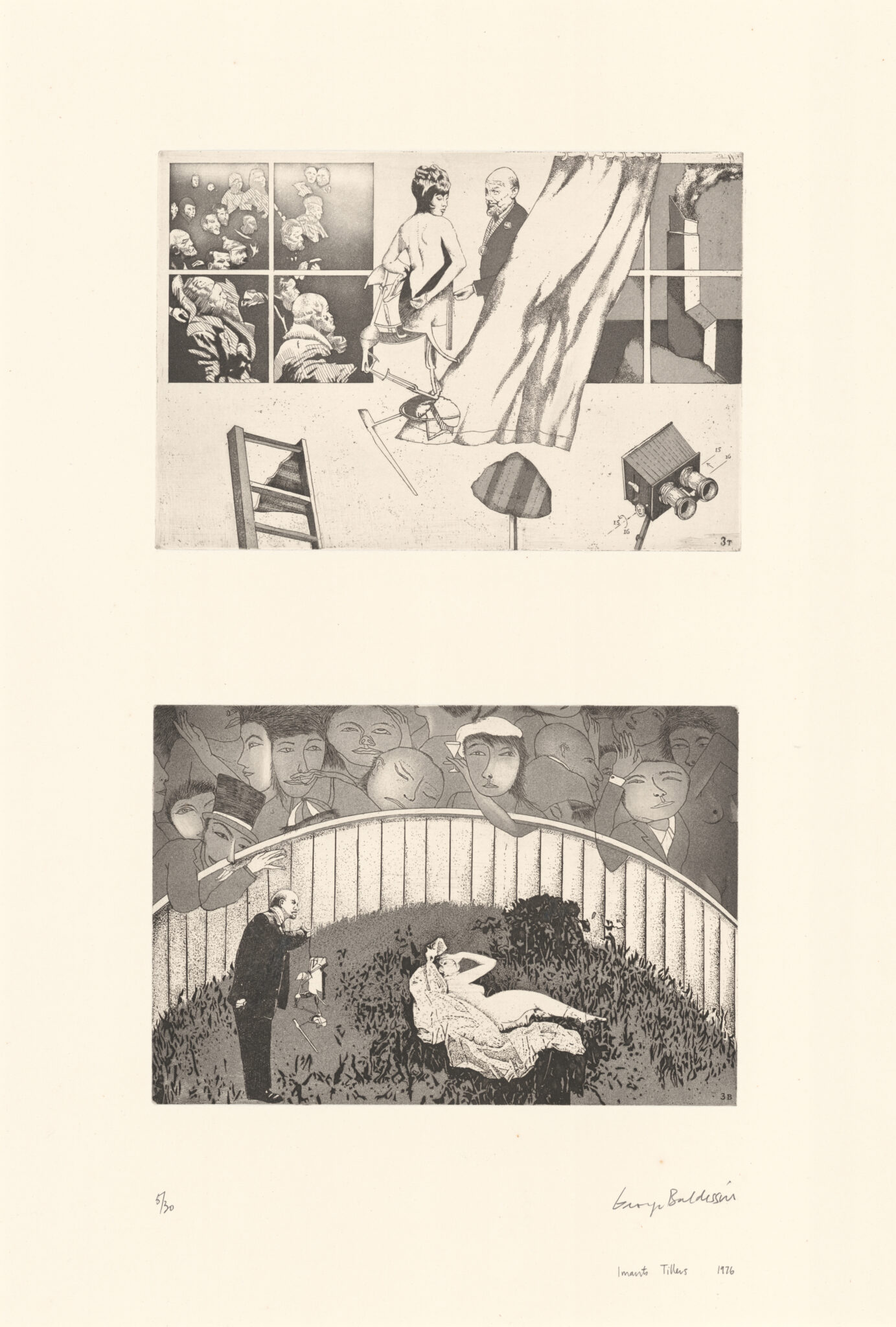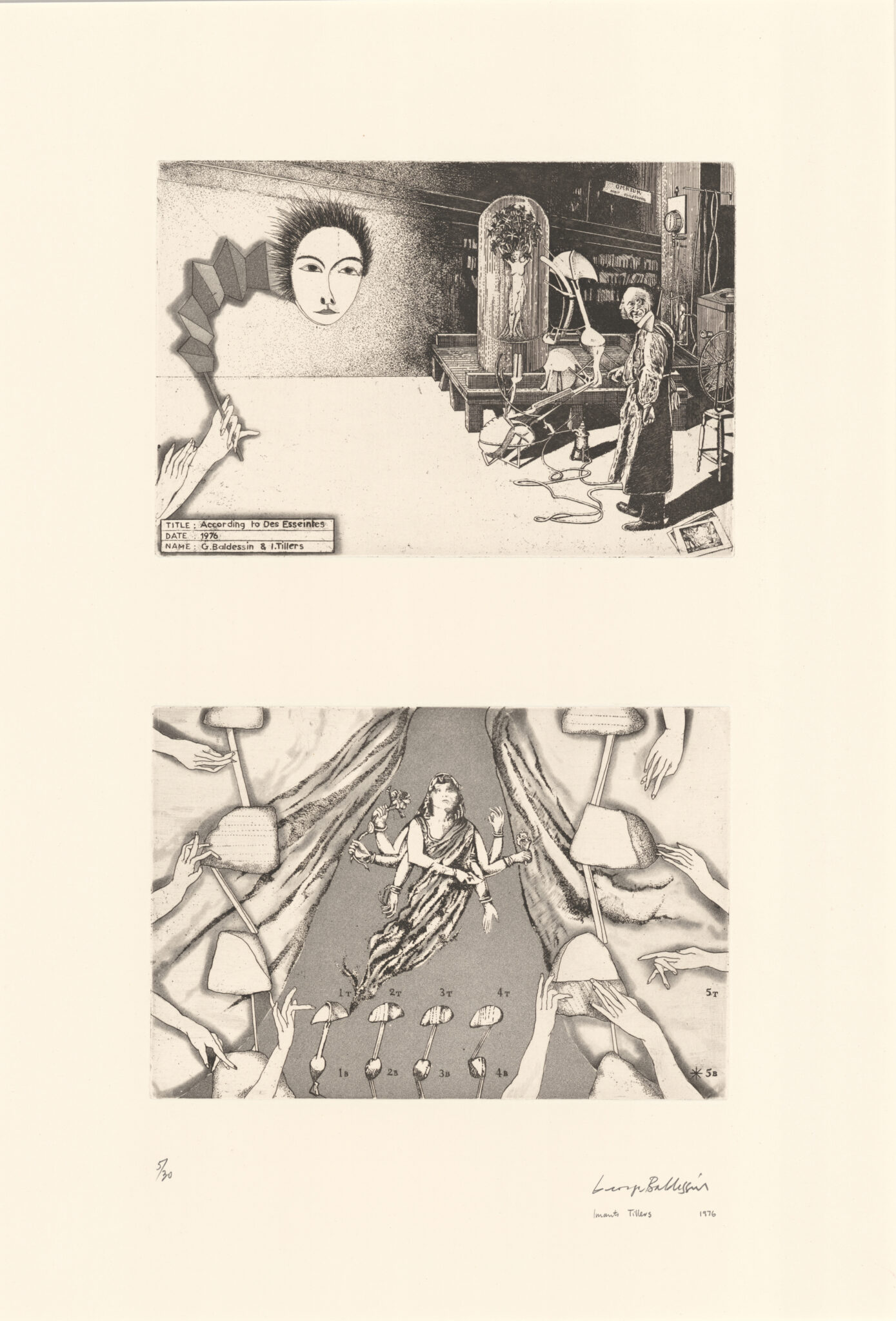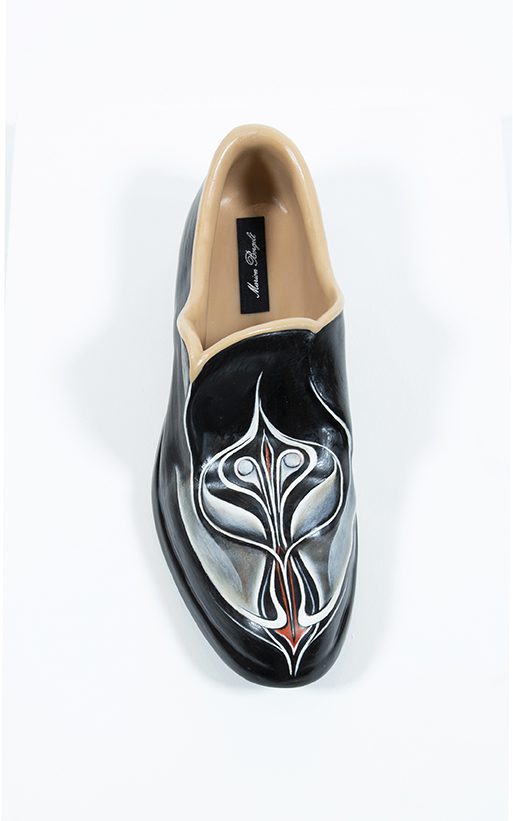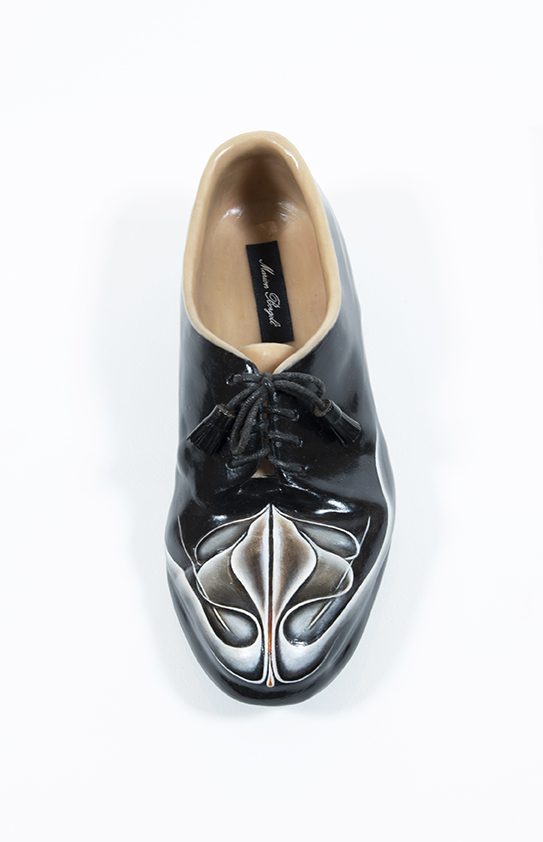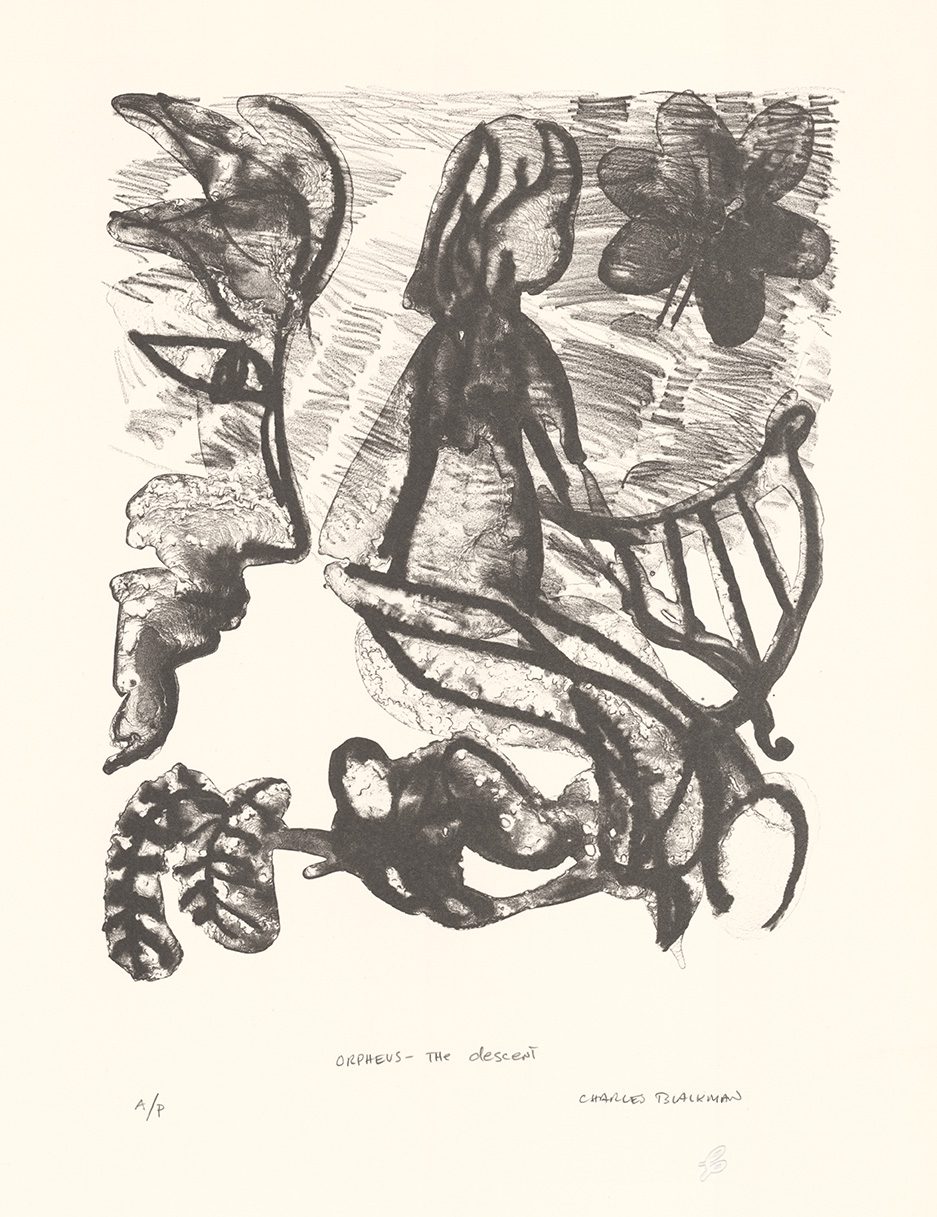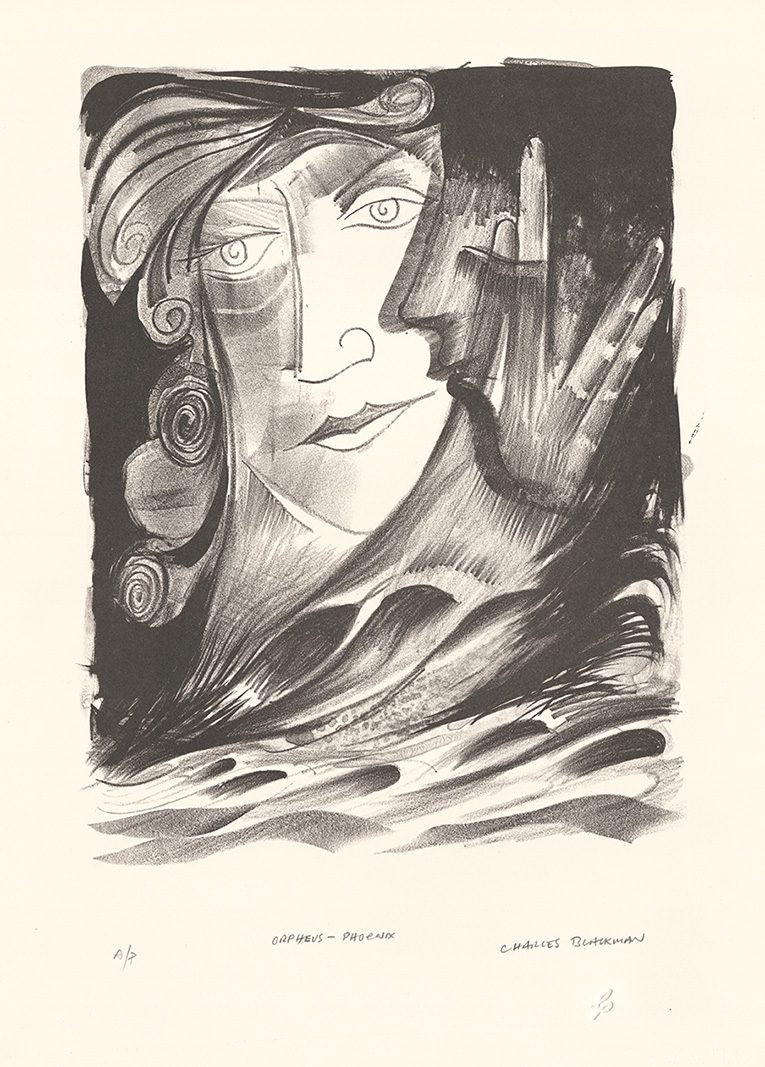LRG x GPAC: First Act
Satellite exhibition
Level 1 – Gippsland Performing Arts Centre, Traralgon
On display to August 2023
In the first exhibition in this series of satellite exhibitions, Latrobe Regional Gallery present several works from the collection which have been selected in reference to theatre, thereby referencing the site – Gippsland Performing Arts Centre – where the works can be viewed.
Check out the complete list of works below.
Dianne Fogwell
Love Song, 1998
Etching, edition 15/55
37.5 x 31 cm,
Latrobe Regional Gallery Collection, purchased from the Print Council of Australia, 1998
About the work:
Love Song is an etching of a large, shadowed heart shape, obscured by sheet music creased and wrapped around it. Indicating a love of music, theatre and song, Love Song is a sincere ode to musicians and performers. The sheet music in this work offers the heart protection and through this, Fogwell speaks to the connection that many of us have with our most beloved songs.
About the artist:
Dianne Fogwell is an acclaimed master printer and founding director of several print studios including Studio One, Criterion Fine Art Press and Gallery, ANU – Edition + Artist Book Studio. Dianne Fogwell is represented in many national and international collections including; National Gallery of Australia; China Printmaking Museum, Guanlan, Shenzhen, China and most Regional Galleries, Public Libraries, Universities, corporate and private collections.
Pat Brassington
The Long Goodbye, 2017
Pigment print, edition 2/8
90 x 73 cm,
Latrobe Regional Gallery Collection, purchased 2019
About the work:
In The Long Goodbye, Brassington infuses the familiar with the fantastic. When first looking at the work, the image of a dancer in motion is seen, emphasising the striking nature of a performance in action. Looking closer at the work, one may notice the manipulated proportions of their body which results in an unusual altering of perspective. Ambiguous and uncanny, the work draws on Brassington’s influence from Surrealists, Walter Benjamin’s ‘optical unconscious’ and literary references. Brassington has utilised dreamlike imagery to create a performance that is more than is appears.
About the artist:
Pat Brassington has worked predominately in photo-media formats since in mid 1980s, and has developed a practice informed by feminism, psychoanalysis and contemporary critical theory. Brassington’s work explores the human condition by creating unusual and unexpected combinations with found and constructed images.
Juli Haas
Ritual, 1991
Watercolour on paper,
76 x 57.4 cm,
Latrobe Regional Gallery Collection, purchased 1994
About the work:
In Haas’ work, the depictions of figures are illustrated with emphasised features, like caricatures, and the actions within the scenes are highlighted through vivid contrasting colours and outlines. In Ritual, a character sits at a table putting on lipstick. Playing with proportion, Haas’ characters are made unrealistically larger than the space they are placed in, crossing references from everyday actions with the otherworldly.
Another figure looks on with binoculars. Other details and accoutrements within the image are a make-up bag and mirror, a loaf of bread on the table with a knife, and cupcakes spilling from a plate onto the floor. Curiously, thorny stems are growing up the characters’ dress with their buds popping out of her sleeves.
About the artist:
Juli Haas studied Visual Arts at the Monash University Churchill campus as a mature age student and mother of three. Her experiences as a mother influenced the narratives woven within her work, as Haas took a particular interest in the relationships between everyday people.
George Baldessin and Imants Tillers
Five works from the series According to des Esseintes, 1976
Etchings, edition 5/30
65 x 50 cm each,
Latrobe Regional Gallery Collection, purchased with assistance from Caltex Victoria Government Art Fund, 1985
About the work:
Jean des Esseintes is the central character in Joris-Karl Huysmans celebrated nineteenth century novel À Rebours and the name titling these works. The character quickly became, and has remained ever since, the personification of extreme aestheticism.
Each of the prints in this series have elements which appear more detailed in their rendering while others are perhaps more diagrammatic – suggestions of constructed spaces or worlds. Props, tools, mechanisms, walls, platforms – there are several components that are ambiguous, but which associations could be drawn to theatrical settings.
The artists created this collaborative series by each working on an etching plate, and then exchanging them to finish what the other had started, much like the Surrealist game of consequences or exquisite corpse. This process results in a dialogue that forms between the artists, and in turn a dialogue that leads to multiple possible interpretations.
About the artists:
Imants Tillers uses multiple canvas boards in his works to form large scale paintings or stacks which explore themes relevant to contemporary culture. Often Tillers’ work will include references drawn from literature, politics, art, as well as the artist’s own experiences and history.
George Baldessin was widely known for his prints, favouring etching and intaglio methods. Baldessin had a radical figurative style, during the 60s and 70s when art at this time was mainly in the field of abstraction. Baldessin was also recognised for his sculptural practice.
Marion Borgelt
“Orchestre des Promeneurs” No.8, 2002
Mixed media,
30 x 10 x 12 cm
“Orchestre des Promeneurs” No.35, 2002
Mixed media,
28.5 x 10.5 x 10 cm
Latrobe Regional Gallery Collection, purchased 2003
About the work:
In each of the shoes in this exhibition, one encounters everyday objects that have been transformed into something beyond their ordinary purpose. Reworking leather dress shoes with wax and paint, the artist has manipulated the shoes with sculptural bends and the addition of swirling white ribbon patterns. The stretched and curled forms, and the symmetry of the painted patterns on the shoes suggest both movement and an unseen energy.
Each of the shoes were originally shown as part of an installation with a group of others, mounted on thin black stands adjusted to varying heights – much like music sheet stands. The title of the work “Orchestre des Promeneurs“ translates from French to ‘Orchestras of Walkers’. Noting this context, Borgelt’s work can be interpreted as alluding to the dynamism and energy of sounds surrounding us every day, and the symphonic qualities that can be noticed in our sonic environments.
About the artist:
Marion Borgelt works across a range of mediums and methods to explore concepts relating to time and transience such as cosmology, life cycles and evolution, entropy, universal symbols and polarities. Recurrent in her work are shapes such as the circle, spiral and oval, which are often used as a way of referencing time, connection, microcosm and macrocosms.
Charles Blackman
Orpheus – The Descent
Orpheus – Metamorphosis
Orpheus – Phoenix
1998 – 2000
Lithographic prints,
56 x 38 cm each (sheet size),
Latrobe Regional Gallery Collection, donated through the Australian Government’s Cultural Gifts Program by Yvonne Howells in 2006
About the work:
In this series of prints, Charles Blackman’s depictions relate to key moments of transition and feelings of love and loss, referencing the ancient Greek mythological figure Orpheus. As the legend has it, Orpheus was a musician, singer and poet who fell in love with Eurydice, a nymph and one of the daughters of the god Apollo. They married but lived happily only for a short time, as Eurydice was bitten by a snake, killed by the venom and taken to the underworld.
In an attempt to bring her back, Orpheus travels to the underworld, where he convinces Hades to let Eurydice return to life with him by playing his music. However, Hades set one condition – that on their travels back from the land of death, Orpheus and Eurydice would not be able to look back until reaching the surface. Arriving at the opening, Orpheus anxiously looks back at his wife to see if she is still following, but she had not yet reached the surface so in that moment disappeared into the underworld forever.
About the artist:
Charles Blackman was an Australian painter who was part of a group of artists formed in the 1950s called the Antipodeans, which included John Brack and Arthur Boyd among others. The Antipodeans were modernist painters who favoured figurative works during a time when abstract expressionism was dominant in the global arts scene. Blackman’s Alice in Wonderland series is one which he is most well known for. As a figurative artist, he based much of his work on literary and musical themes, as well as dreamlike images.
